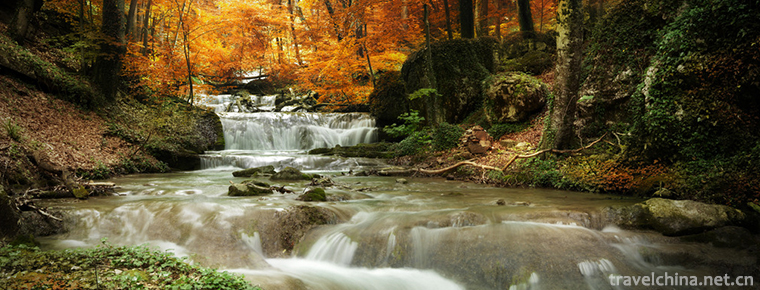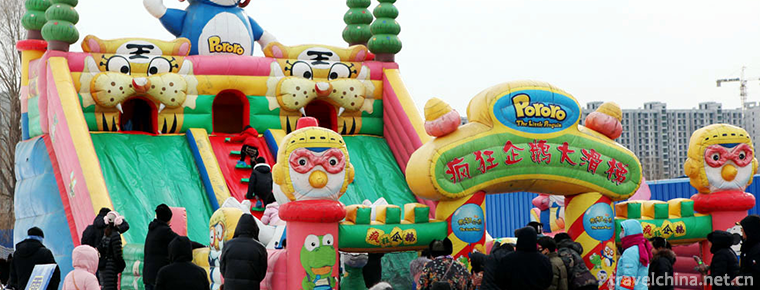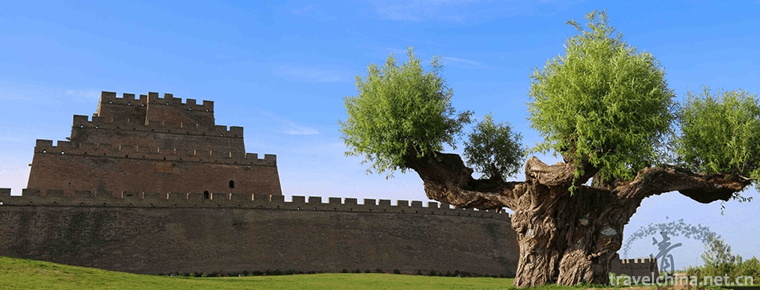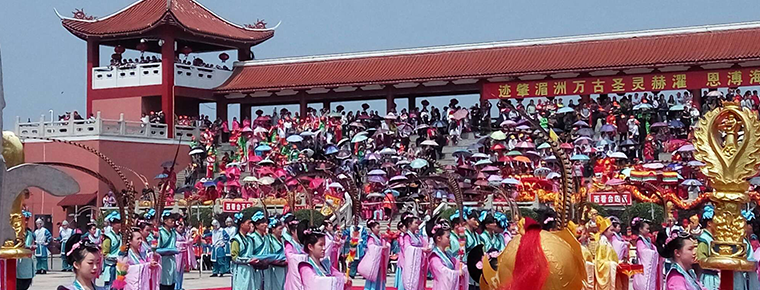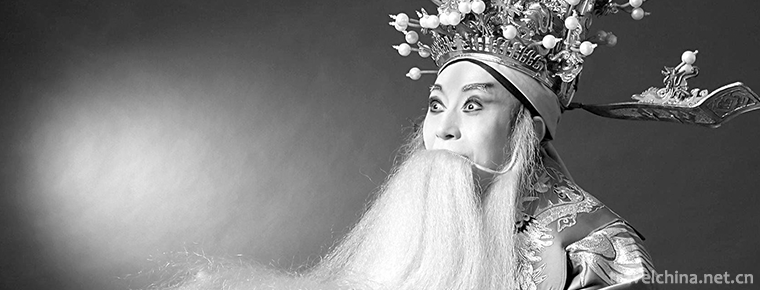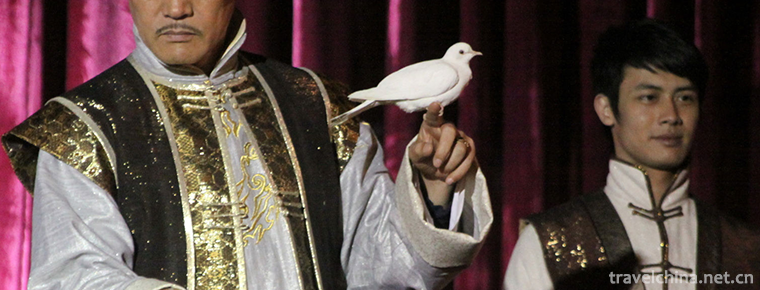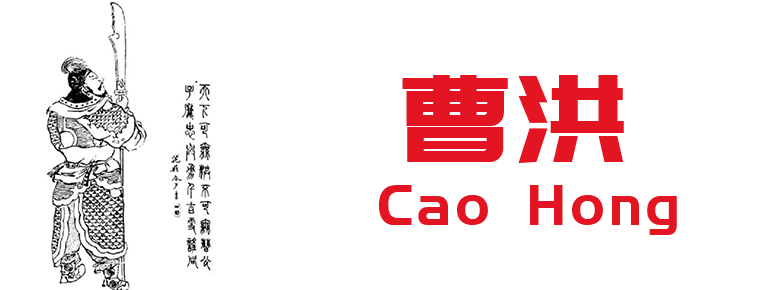Longyan tea lamp
Longyan tea lamp
Longyan tea-picking lamp, also known as tea-picking and butterfly-beating, is a popular folk dance and singing in Longyan city and countryside. It integrates rap, opera and dance into a comprehensive form of mass recreational activities. Tea-picking lamps have been popular in Meishan Village since the mid-19th century. Tea-picking music and war drums were introduced from Guangdong by the 17th ancestor of Meishan Linshi. Dance shows the working scene of tea picking season: led by the tea mother, the village aunts follow Wu Sheng and the male ugly in the music of tea picking gongs and drums, and come to the tea garden to pick spring tea .
In November 2005, Longyan Tea-picking Lamp was announced by Fujian Provincial Government as a provincial intangible cultural heritage protection project. On December 03, 2014, Longyan Tea-picking Lamp was selected into the "Fourth National Class of Representational Items of intangible cultural heritage" issued by the State Council.
Development history
The tea picking lantern began to be popular in the United States since the mid nineteenth Century. The music of the tea picking lantern was mainly based on the music uploaded by the ancestors, and absorbed the music essence of the music flowing into Guangdong by the old artists. In the eighth year of Xianfeng in Qing Dynasty (1858 A.D.), the Chen family of Longyan performed a tea-picking lamp at a large-scale event. The lyrics and tunes transcribed at that time (now kept in Longyan Museum) .
In 1952, after being processed and sorted out by Longyan County Cultural Museum, tea lanterns organized rehearsals to attend the first rural performance in Fujian Province and won awards. Later, it was adapted by Jinjiang Literature and Works Group to participate in the East China regional performance, and produced documentaries and copies for distribution all over the world.
At the end of 1953, the Chinese Youth Art Troupe took the tea lantern to Romania for the third International Youth Festival of Peace and Friendship, and won the silver medal.
In the 1960s and 1970s, the music of tea-picking lanterns was used by the Central People's Broadcasting Station and Fujian People's Broadcasting Station as the prelude of "Broadcasting to Rural Areas" for decades .
In 1981, the Ministry of Culture of the People's Republic of China submitted the original music score of Meishan village tea lantern to the United Nations Educational, Scientific and Cultural Organization for the record. In the same year, it was collected as an "oral cultural heritage" by the United Nations Educational, Scientific and Cultural Organization.
In November 2005, Longyan Tea-picking Lamp was announced by Fujian Provincial Government as a provincial intangible cultural heritage protection project .
On June 27, 2008, the Longyan Tea Lantern Seminar held its founding meeting at Meishan Primary School, Subanxiang, Xinluo District. The conference adopted the statute of the Seminar and the list of its members. Longyan Tea Lamp Research Association aims to mobilize all sectors of society to further tap, collect, organize and promote the artistic charm of "Longyan Tea Lamp".
At the end of 2008, the General Office of the Ministry of Culture issued the Notice on Publicizing the Recommended List of Hometown of Chinese Folk Culture and Art, among which Xinluo District, with Longyan Tea-picking Lamp as its project, was listed. Up to 2008, there were 280 performers of tea picking and butterfly throwing in Xinluo District. During holidays and wedding celebrations, "Longyan tea picking lamp" has become an indispensable literary and artistic program.
On September 10, 2009, 10,100 people participated in the performance of tea-picking lanterns, which was successfully challenged in the column "Want to Challenge" of CCTV. They were certified by the headquarters of Jinis, Shanghai. The participants were 19 townships, street teams and one education system team from Xinluo District, covering representatives of farmers, enterprise personnel, community residents, teachers and students .
On January 30, 2010, the "largest tea lantern dance" won the 12th World Guinness Best Project Award .
In 2012, Xinluo District set up a national non-material cultural heritage protection project "Longyan Tea Picking Lamp" leading group to systematically collate the history, inheritance and development of tea picking lamp, to make up for the lack of preparation and deviation in the direction of Heritage Application .
On December 03, 2014, the Longyan tea-picking lamp declared by Xinluo District, Longyan City, Fujian Province, was selected into the "Fourth National Class of Non-material Cultural Heritage Representative Items List" issued by the State Council.
Inheritance situation
In the 1980s, Zhang Cuiying, who reformed Tea-picking Lamp together with Wen Qijiu in the early liberation period, went to Taiwan and Malaysia to teach tea-picking lamp successively, which made tea-picking lamp spread in Taiwan and Malaysia .
As of 2013, there are two teams performing tea lanterns in Meishan Village. The elderly team, mostly over 80 years old, is a traditional performance. The newcomers have a team of young people aged 30 or 40. They adopt new performances. Besides different makeup and headdresses, they sing differently. Only 89 veteran artists in Meishan village can perform traditional tea lanterns. The predicament they are facing is that the old artists are old and the original materials and props are few. Among the provincial inheritors, only Huang Shuxia was left alone. Other veteran artists, can play tea god, tea woman is less. And as you get older, you will gradually forget the acting program. There were originally 50 or 60 kinds of performances of tea lanterns, but only 30 kinds of performances are left. The Propaganda Department of Xinluo District Committee, while protecting traditional tea-picking lamps, develops modern tea-picking lamps so as to simplify them appropriately according to the characteristics of different groups of people so as to promote them better. Tea lantern performers in Xinluo District are specifically responsible for entering the campus and the community. Tea lanterns are also included in the local textbook .
In 2014, along with the success of Longyan Tea Lantern in declaring the state-level non-legacy, a village and town level tea lantern literary and art team was set up among the people to recruit young actors and perform tea lantern programs .
social influence
Early tea-picking lamps were taught skills by the prestigious "big head house" in the clan. At the time of opening, they also killed pigs and sheep . The original tea-picking lamp in Longyan was set up by the prestigious "big head house" of the clan and the naive and lively children. At the same time, several "small heads" took care of children, gave red envelopes, gave dragon and Phoenix clothes, headwear and shoes and socks, gave performances, village competitions .
Since 2006, Subanxiang has used Longyan Tea Lamp as a folk art carrier to innovate reproductive culture propaganda platform: transforming Meishan Primary School into Longyan Tea Lamp Population Culture Folklore Park, as a propaganda position radiating the whole town, the whole district and even affecting the whole city. Meishan Village Tea Lamp Performance Troupe was set up in Meishan Village, and several village-level Tea Lamp Performance Troupes were set up in Huangdi and other villages, primary and secondary schools. The troupe is responsible for compiling the contents of reproductive culture into easy-to-understand, humorous tea-picking lanterns, singing and dancing, and teaching for fun. Using the online platform of "Farmer's Home" to compile the reproductive cultural content into lyrics, ballads, lip-synching, dialects and proverbs into the tea lantern culture propaganda webpage .
In June 2014, Subanzhen set up Tea Lamp Culture Development Co., Ltd. and the relevant departments authorized the Subanzhen government to use the trademark of tea lamp, combining the characteristic agricultural products of Subanzhen with tea lamp, such as rice flour, pueraria powder and honey pomelo, to strengthen the brand building of tea lamp .
On August 6, 2015, the micro-film "Dream Margin Tea-picking Lamp" officially started in Meishan Village, Subanzhen, Xinluo District, where tea-picking lamp originated. In the plot, a young heir of tea-picking lamp tells the story of the transformation process from rebellion to acceptance and innovative development of tea-picking lamp, taking the daily life of the inheritors of tea-picking lamp as the background, showing the inheritance and development of tea-picking Lamp Art in the new era 。

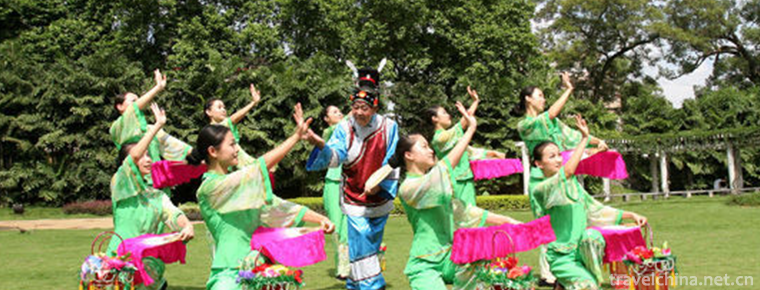
-
Mountain Yuntai
Yuntai Mountain is a world geological park, national AAAAA-class tourist attraction and national scenic spot, located at the junction of Xiuwu County in Jiaozuo City, Henan Province.
Views: 145 Time 2018-10-29 -
Crab Island
Crab Island Green Eco-Resort is based on agriculture, characterized by villages, with environmental protection, green, organic and healthy as the solid connotation of tourism and vacation. .
Views: 126 Time 2019-02-25 -
Zhen Bei Tai
Zhenbeitai, World Heritage Site, National Key Cultural Relics Protection Unit. It is located on the top of Hongshan Mountain, 4 kilometers north of Yulin City, a famous national historical and cultura.
Views: 227 Time 2019-03-17 -
The Mausoleum of the Yellow Emperor
The Mausoleum of the Yellow Emperor is one of the national intangible cultural heritages, which has formed a certain scale format and sacrificial ceremonies in the long-term practice..
Views: 150 Time 2019-05-04 -
Qin opera
Qin Opera, also known as Bangzi Opera, is a traditional drama in Northwest China and one of the national intangible cultural heritage..
Views: 211 Time 2019-06-10 -
conjuring tricks
Conjuring tricks is one of the traditional Chinese acrobatics. Performers use agile methods to create audiovisual illusions, performing various objects, animals or water and fire and other rapid incre.
Views: 96 Time 2019-07-01 -
Yongxin Shield Dance
Shield dance, also known as men's group dance rattan dance, roll the shield, reflects the most primitive national cohesion, team spirit and fighting spirit. Shield dance is mainly spread in Longyuanko.
Views: 151 Time 2019-07-14 -
Cao Hong
Cao Hong(? - two hundred and thirty two). Pei Guo Qiao (now Anhui) Bozhou People. Emperor Wei and Emperor Wei of the late Han Dynasty and the Three Kingdoms period Cao Cao From brother..
Views: 204 Time 2019-09-15 -
Gongmu mountain
Gongmu mountain is located 5 kilometers southwest of Yanyuan County, Liangshan Yi Autonomous Prefecture, Sichuan Province. It is named after the stone on the mountain because it looks like two male and female genitals..
Views: 330 Time 2020-10-16 -
Chongzhou Confucian Temple
One of the four best preserved Confucian temples in Sichuan Province. National key cultural relics protection units. Confucius Cultural Center in Western China. It is located in the south of Chongzhou painting pool. .
Views: 331 Time 2020-11-05 -
Wenchuan earthquake epicenter site
The earthquake site, located in Yingxiu Town, Wenchuan, Sichuan Province, is open all day..
Views: 136 Time 2020-11-07 -
Yibin science and technology
In 2019, there are 34 new high-tech enterprises, 13 provincial science and technology achievements transfer and transformation demonstration enterprises, 2 provincial science popularization bases and 6 Municipal Science Popularization base.
Views: 314 Time 2020-12-18
